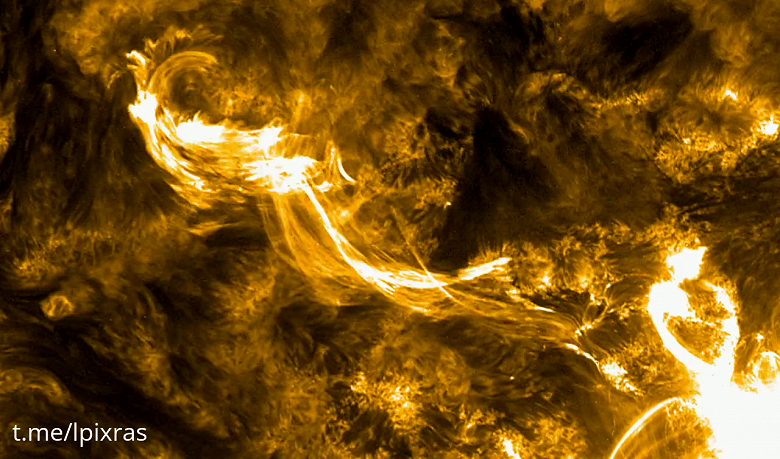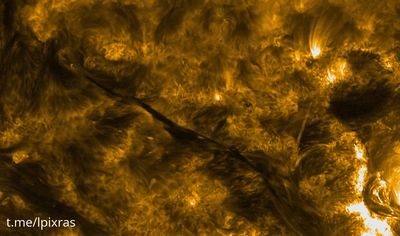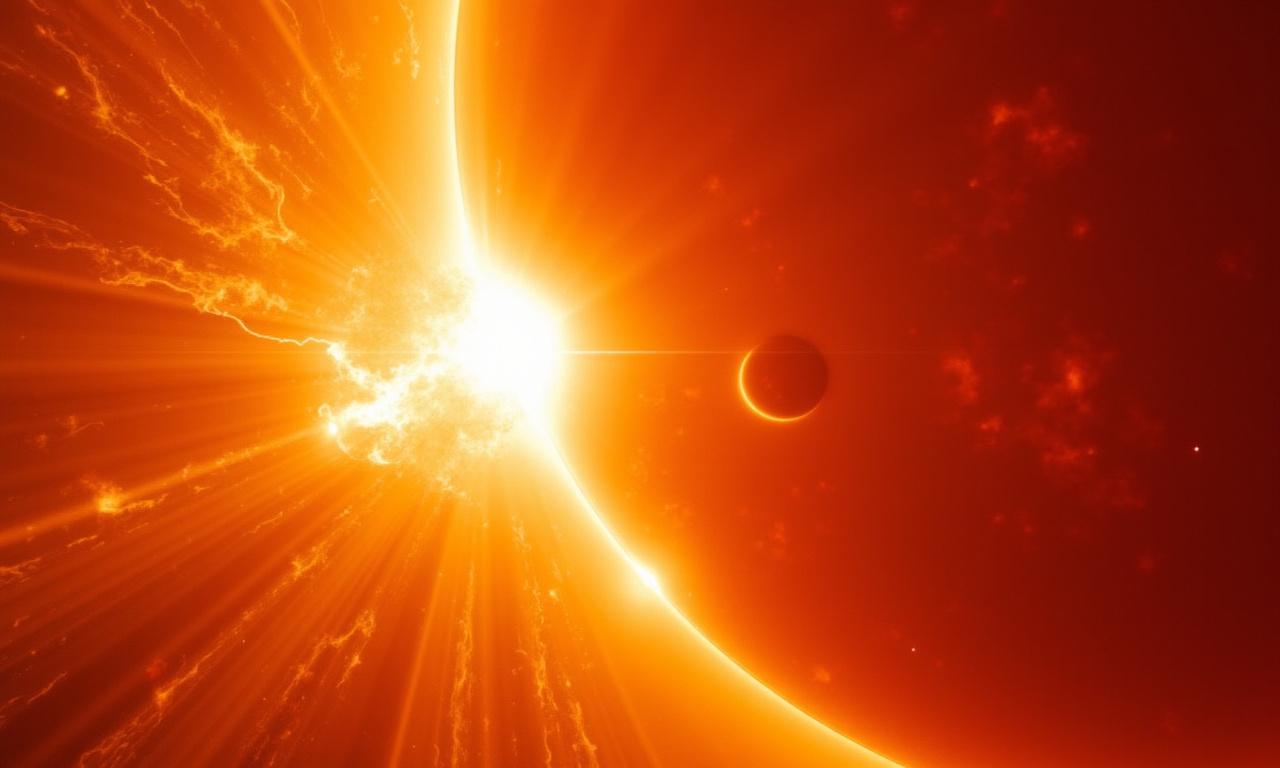Sun’s Dance with Magnetic Currents Revealed
Space observatories, continually monitoring solar activities, have documented an unusual dynamic interaction between a potent X-flare and a neighboring solar prominence. This rare celestial performance highlights the intricate ballet of solar forces as they influence each other within the vibrant atmosphere of our Sun.

The image above, provided by the Laboratory of Solar Astronomy, showcases the core of this interaction. According to observation data, magnetic strands of hot plasma erupted from the flare’s epicenter, enveloping and destabilizing the massive prominence. This prominence, a cooler and denser gas formation, stretched approximately 300,000 kilometers, capturing the awe of scientists worldwide.

Along with the compelling video, experts note that the ‘mechanical precision’ of the plasma structures is explained by the interaction of electric currents in the Sun’s corona and the pressure gradient between the hot flare core and the cooler mass of the prominence. This interaction resulted in the partial destruction of the prominence and the redistribution of plasma within the flare’s magnetic loop.
Implications for Understanding Solar Phenomena
In the final stage of this extraordinary event, the magnetic fibers, spinning at high speeds, descend into the Sun’s lower atmosphere, pulling the remnants of the destroyed prominence. According to specialists, this process exemplifies a rare instance of ‘reverse injection,’ where expelled material is drawn back by magnetic forces.
Why It Matters
This observation is crucial for understanding the Sun’s magnetic environment and its impacts on space weather. The interaction between flares and prominences can influence solar winds and coronal mass ejections, both of which have direct effects on Earth’s geomagnetic environment. These solar processes can disrupt satellite communications, power grids, and even influence climate patterns.
Looking Ahead
As our dependence on satellite technology and solar energy systems grows, monitoring such solar activities is more important than ever. Scientists are keen to study similar events to predict and mitigate potential disruptions caused by sudden solar outbursts.


